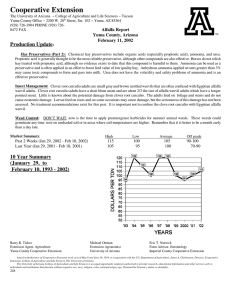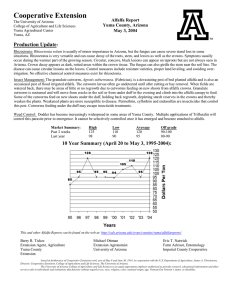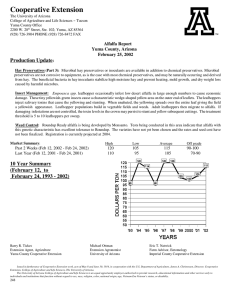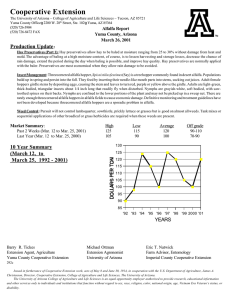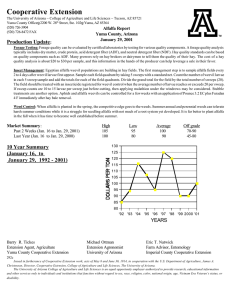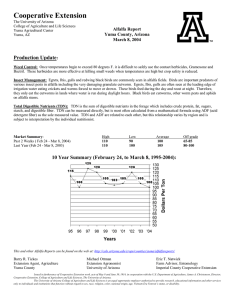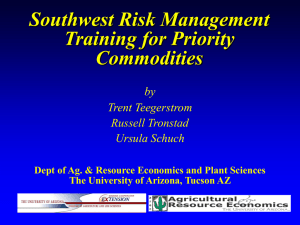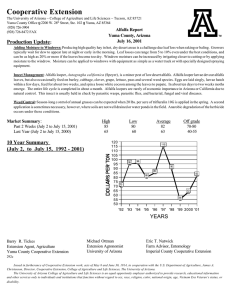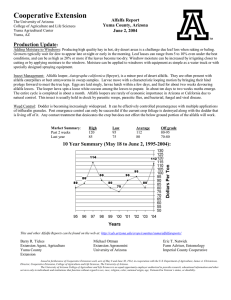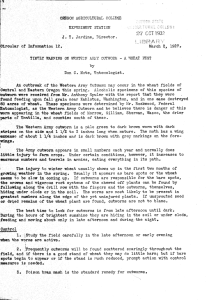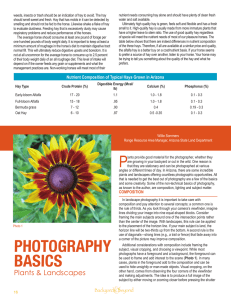Cooperative Extension
advertisement
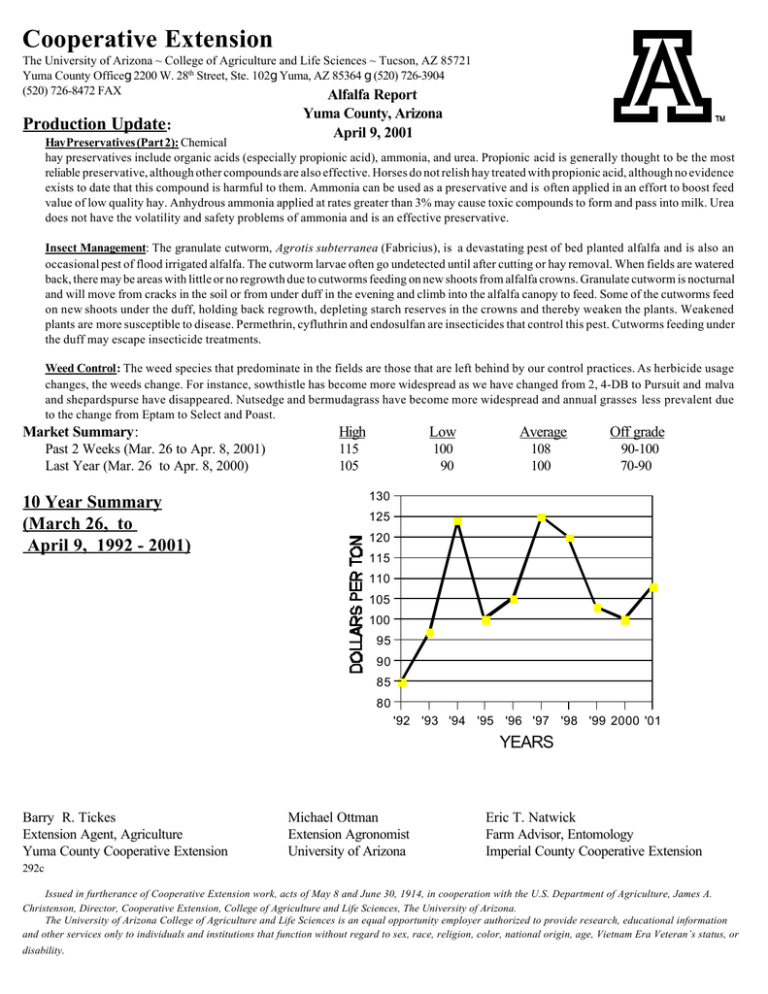
Cooperative Extension The University of Arizona ~ College of Agriculture and Life Sciences ~ Tucson, AZ 85721 Yuma County Officeg2200 W. 28th Street, Ste. 102gYuma, AZ 85364 g(520) 726-3904 (520) 726-8472 FAX Alfalfa Report Production Update : Yuma County, Arizona April 9, 2001 Hay Preservatives (Part 2): Chemical hay preservatives include organic acids (especially propionic acid), ammonia, and urea. Propionic acid is generally thought to be the most reliable preservative, although other compounds are also effective. Horses do not relish hay treated with propionic acid, although no evidence exists to date that this compound is harmful to them. Ammonia can be used as a preservative and is often applied in an effort to boost feed value of low quality hay. Anhydrous ammonia applied at rates greater than 3% may cause toxic compounds to form and pass into milk. Urea does not have the volatility and safety problems of ammonia and is an effective preservative. Insect Management: The granulate cutworm, Agrotis subterranea (Fabricius), is a devastating pest of bed planted alfalfa and is also an occasional pest of flood irrigated alfalfa. The cutworm larvae often go undetected until after cutting or hay removal. When fields are watered back, there may be areas with little or no regrowth due to cutworms feeding on new shoots from alfalfa crowns. Granulate cutworm is nocturnal and will move from cracks in the soil or from under duff in the evening and climb into the alfalfa canopy to feed. Some of the cutworms feed on new shoots under the duff, holding back regrowth, depleting starch reserves in the crowns and thereby weaken the plants. Weakened plants are more susceptible to disease. Permethrin, cyfluthrin and endosulfan are insecticides that control this pest. Cutworms feeding under the duff may escape insecticide treatments. Weed Control: The weed species that predominate in the fields are those that are left behind by our control practices. As herbicide usage changes, the weeds change. For instance, sowthistle has become more widespread as we have changed from 2, 4-DB to Pursuit and malva and shepardspurse have disappeared. Nutsedge and bermudagrass have become more widespread and annual grasses less prevalent due to the change from Eptam to Select and Poast. Market Summary: Past 2 Weeks (Mar. 26 to Apr. 8, 2001) Last Year (Mar. 26 to Apr. 8, 2000) 10 Year Summary (March 26, to April 9, 1992 - 2001) High Low Average Off grade 115 105 100 90 108 100 90-100 70-90 130 125 120 115 110 105 100 95 90 85 80 '92 '93 '94 '95 '96 '97 '98 '99 2000 '01 YEARS Barry R. Tickes Extension Agent, Agriculture Yuma County Cooperative Extension Michael Ottman Extension Agronomist University of Arizona Eric T. Natwick Farm Advisor, Entomology Imperial County Cooperative Extension 292c Issued in furtherance of Cooperative Extension work, acts of May 8 and June 30, 1914, in cooperation with the U.S. Department of Agriculture, James A. Christenson, Director, Cooperative Extension, College of Agriculture and Life Sciences, The University of Arizona. The University of Arizona College of Agriculture and Life Sciences is an equal opportunity employer authorized to provide research, educational information and other services only to individuals and institutions that function without regard to sex, race, religion, color, national origin, age, Vietnam Era Veteran’s status, or disability.
